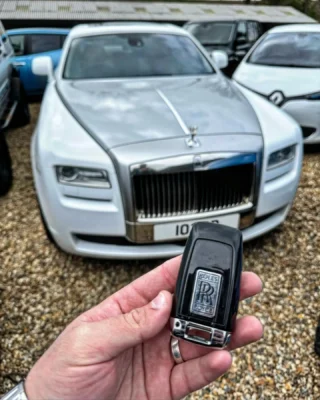Broken Key Repair: Solutions for Common Lock Issues
Intro
Keys are necessary tools in our lives, permitting us to secure our homes, cars, and individual belongings. However, keyless entry repair can also break, resulting in aggravations and inconveniences. Comprehending how to resolve broken key concerns is essential for anyone wishing to keep their locks and ensure access to their property. This short article covers numerous elements of broken key repair, including common causes, repair techniques, and preventive measures to avoid future circumstances.
Common Causes of Broken Keys
Keys can break for numerous reasons. Comprehending these causes can help in avoiding future events:
- Wear and Tear: Over time, keys can wear down due to frequent use, causing weakened shafts that are most likely to break.
- Poor Key Design: Keys that are inadequately designed may lack structural stability, making them more susceptible to breaking under stress.
- Inaccurate Key Usage: Using extreme force to turn a key, specifically in a jammed lock, can easily lead to a damage.
- Ecological Factors: Extreme temperature levels or direct exposure to moisture can weaken metal keys, leading to brittleness.
- Lock Malfunctions: A malfunctioning lock can put excessive tension on a key, triggering it to snap during operation.
Signs of a Broken Key
Identifying a broken key typically includes obvious signs. Here are some signs:
- Partial insertion into the lock: If the key can not be completely inserted or eliminated.
- Unexpected resistance: If the key feels stuck when being turned.
- Visible divides or fractures: Inspecting the key can reveal cracks or breaks in the metal.
- Incomplete engagement: The key might turn less than needed to actuate the lock.
Methods for Broken Key Repair
When faced with a broken key, there are numerous techniques to consider for repair. car key blade replacement is vital to pick the ideal one based on your specific scenario.
1. Remove the Broken Key
If a key breaks within a lock, the very first action is to remove the broken part:
- Use tweezers or needle-nose pliers: If a piece is standing out of the lock, carefully pull it out.
- Insert a key extractor tool: This specialized tool can help extract lodged parts more successfully.
| Tool | Finest Used For |
|---|---|
| Tweezers | Shallow extraction |
| Key extractor tool | Deeply lodged key pieces |
| Lube spray | Alleviating extraction of stuck parts |
2. Superglue Method
For circumstances where a key has actually partly broken however is undamaged enough to remain gripped, the superglue method may use a temporary fix.
- Tidy the broken surfaces thoroughly.
- Apply a thin layer of superglue.
- Hold the pieces together for a few minutes until the glue sets.
Keep in mind: This technique is not a permanent service and must be used with caution as the repair can quickly fail under functional tension.
3. Metal Epoxy
For a more robust repair, metal epoxy supplies a more powerful bond than superglue.
- Follow the guidelines on the epoxy product packaging for preparing the adhesive.
- Apply to the broken area and hold up until set (normally a few hours).
4. Duplicate the Key
In instances where lock functionality is necessary, creating a duplicate key is typically the very best route:
- Visit a locksmith: Many locksmiths can duplicate keys quickly and efficiently.
- Utilize a key-tracing service: Some locksmith professionals use tracing techniques to cut a similar key based on the residues.
5. Lock Replacement
When keys consistently break, it may be because of lock problems instead of key integrity. In such cases:
- Consult a locksmith to examine the lock's condition.
- Consider replacing the lock totally if considerable damage or wear appears.
Avoiding Key Breakage
Avoiding key damage is often better than repair. Here are some practical ideas:
- Limit force on keys: Always turn keys gently to avoid unnecessary stress.
- Regular key evaluation: Check for wear and change keys showing signs of damage.
- Utilize a keychain: Prevent excessive bending by utilizing a sturdy keychain.
- Oil locks: Ensure locks operate efficiently to lower pressure on keys.
- Shop keys appropriately: Avoid putting type in environments that can trigger rust or rust.
Frequently Asked Questions About Broken Key Repair
1. Can I repair a broken key myself?
Yes, you can try to repair a broken key yourself utilizing approaches like the superglue or metal epoxy techniques. Nevertheless, these are short-lived repairs, and it is suggested to seek advice from a professional locksmith for a more long lasting solution.
2. Is car key extraction repairing a broken key?
In many cases, especially with nostalgic or distinct keys, a repair might be worth it. For standard keys, replication or replacement is normally more reliable and trustworthy.
3. How can I prevent my keys from breaking?
To avoid damage, make sure that keys are exempt to excessive force, frequently inspect them for wear, and keep locks well-kept.
4. When should I look for a locksmith's aid?
If you are not able to eliminate a broken key from a lock or if the lock malfunctions regularly, it's finest to look for a locksmith's knowledge.
Broken keys can provide a substantial inconvenience, but they are workable with the ideal technique. By understanding the typical causes and readily available repair approaches, individuals can respond successfully to key damage. Drawing from preventive measures will likewise assist maintain key stability and performance. Eventually, a proactive approach to key and lock upkeep can substantially lower the frequency of these annoying problems.

